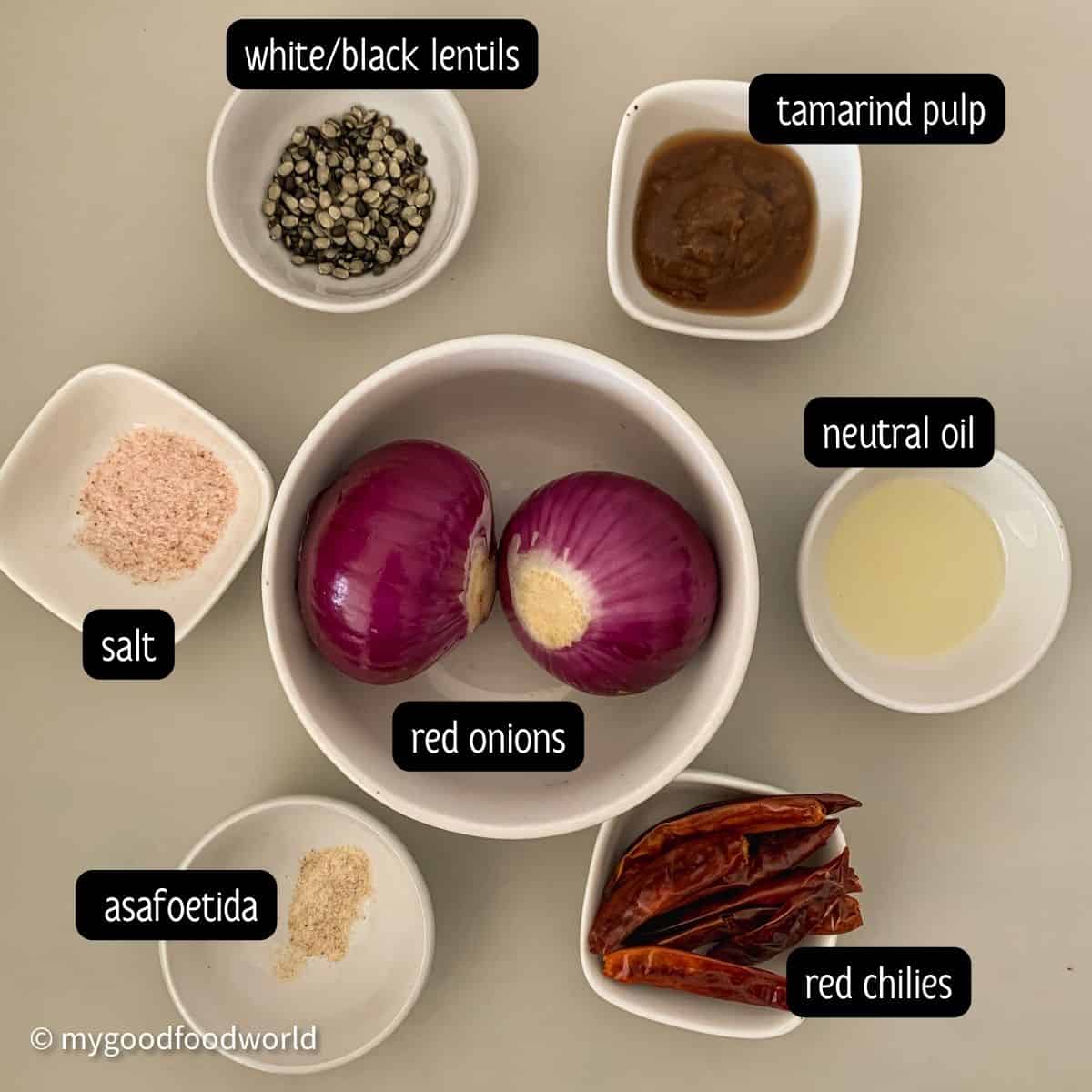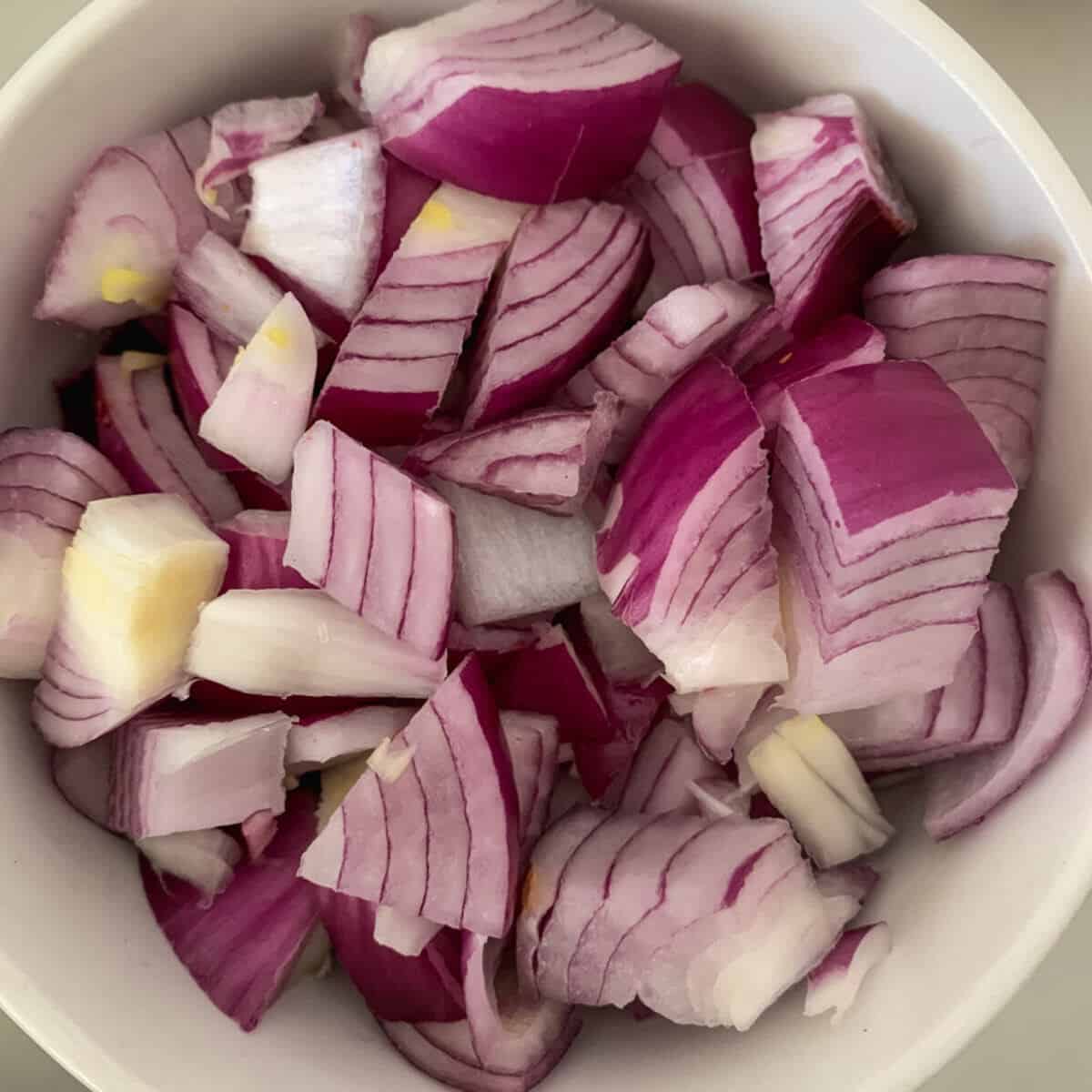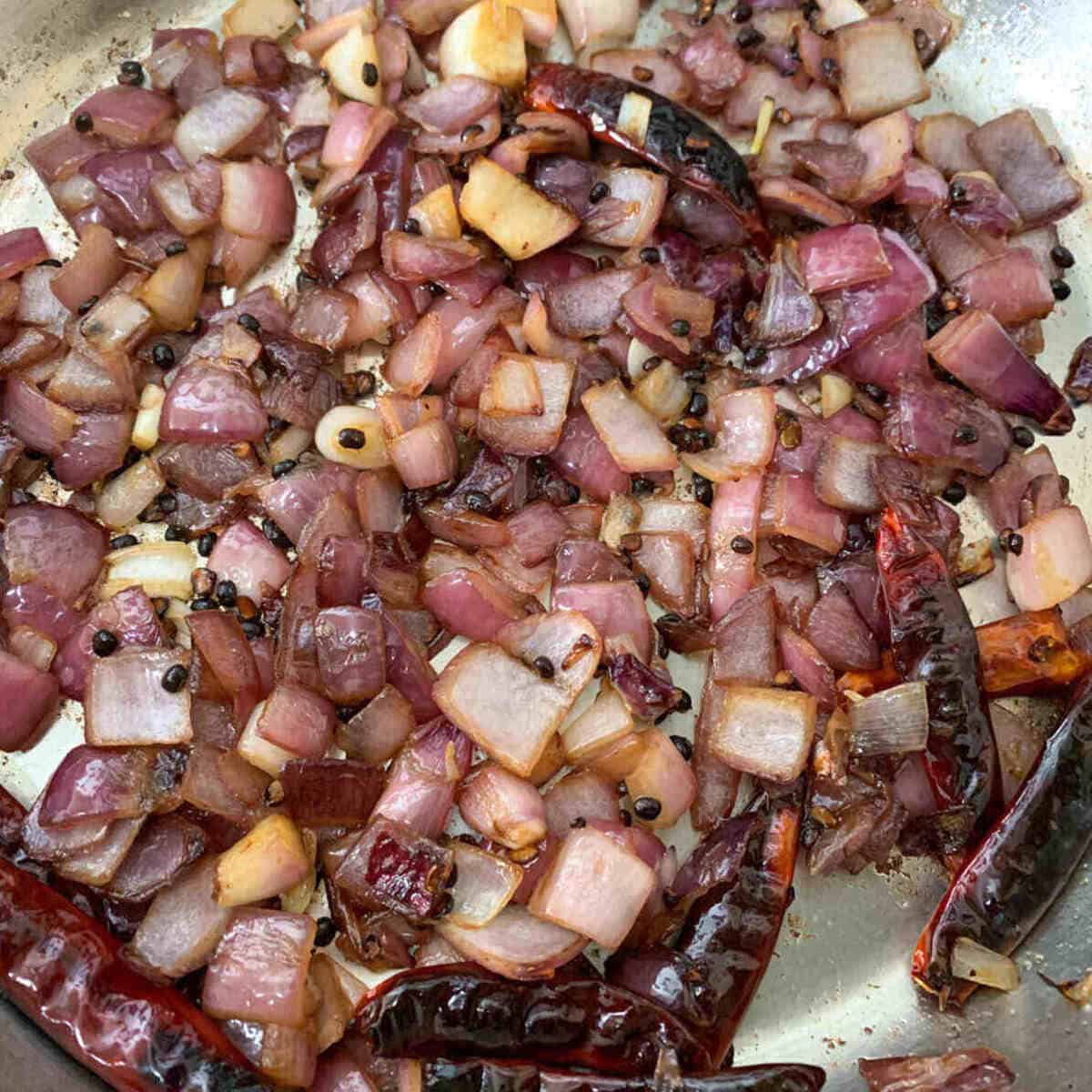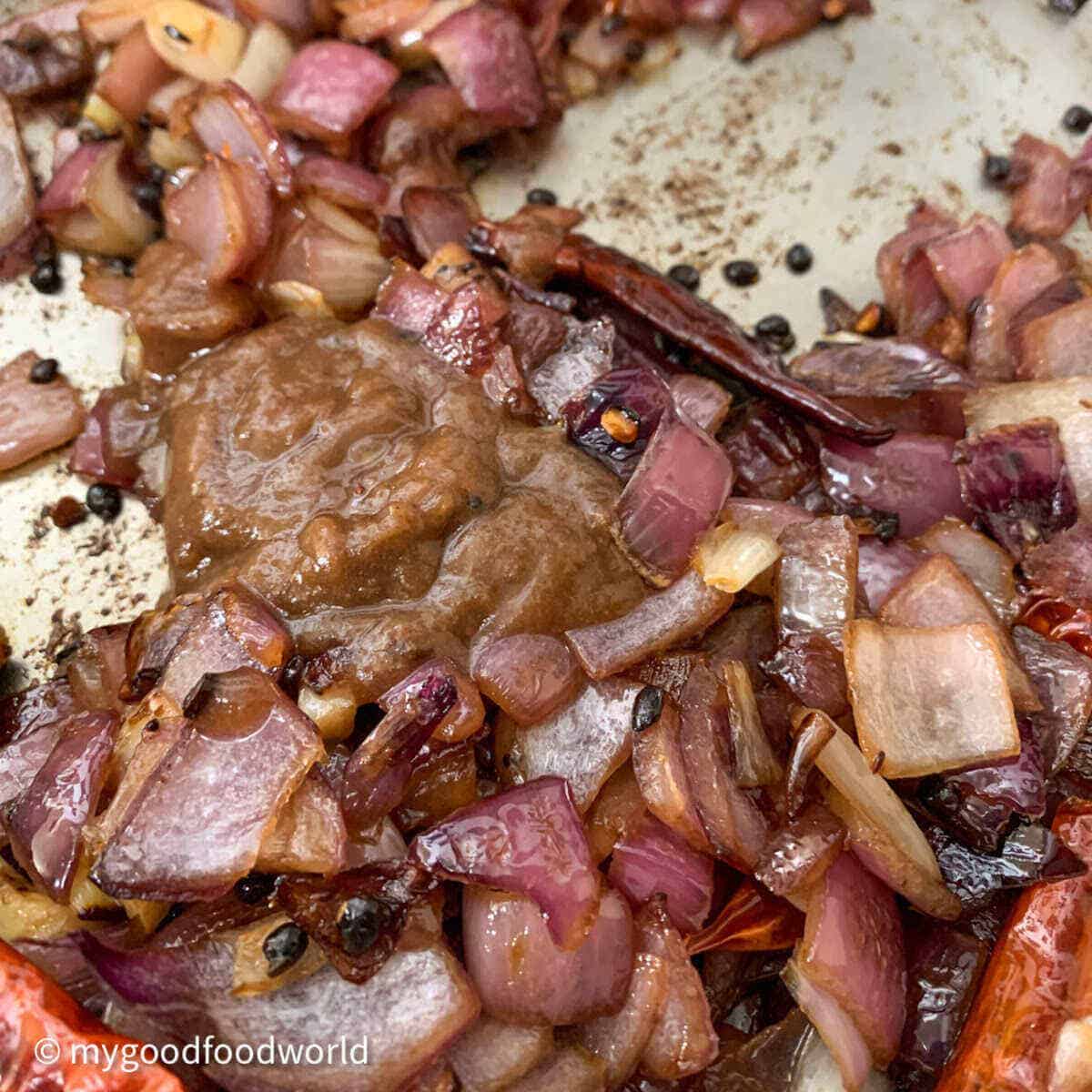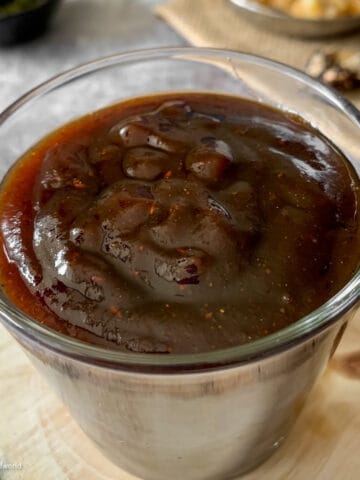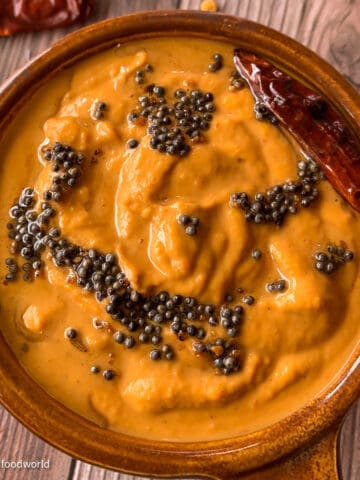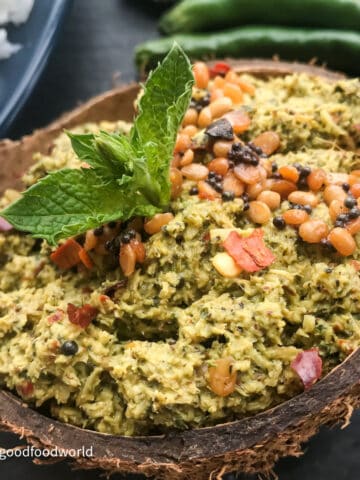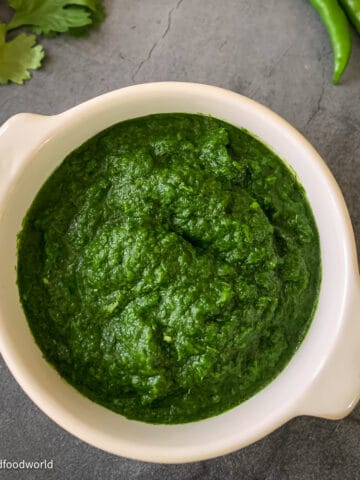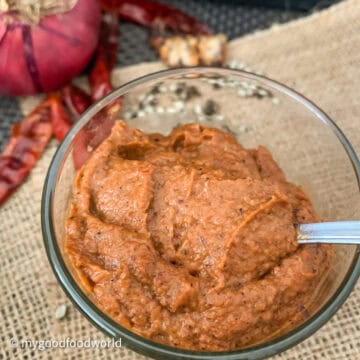This post contains helpful notes and tips to help you make the perfect dish. However, if you are in a rush, please use the “Jump to Recipe” link above or the “Jump to” links below to get to the section you want. For example, this amla pudina chutney comes in handy not just as a dip, but also elevates quick fried rice on a busy day. If you are a fan of chutneys as well, see the section below for more suggestions. I learned this onion chutney recipe from my amma. At home, we refer to it as ullipaaya pachadi. In my native language, Telugu, “ullipaaya” translates to onion, and “pachadi” means chutney. My mom’s onion pachadi is quite fiery, and when I was growing up, I enjoyed having it with ghee or butter rice to balance out the spiciness while still leaving my mouth tingling. 😋
More Indian chutney recipes
If you, like me, find chutneys to be versatile and delicious, then here are some more you should try:
gluten-free free of nuts soy-free dairy-free
Important note: Please check the label to ensure that the asafoetida you are using is gluten-free, as not all varieties are. If in doubt, it’s best to skip the ingredient entirely.
Disclaimer: Our content aims to be informative and educational, but it should not replace professional medical advice. Since manufacturing processes can vary and cross-contamination is possible, it’s essential to verify product labels and allergen information. Make sure all ingredients align with your specific allergies. As readers, you bear the responsibility for ensuring allergen safety when buying or consuming foods.
Balance of flavors: Much like this bitter melon curry, this recipe focuses on balancing flavors so that no single taste overwhelms. The sweet, spicy, and tangy flavors harmonize beautifully, complemented by the addition of spices and crunchy lentils.
Natural ingredients: This traditional Indian onion chutney recipe does not require overly processed ingredients. Instead of relying on added sugar, it relies on the natural sweetness of caramelized onions. Tamarind, rather than vinegar or soy sauce, serves as the natural souring agent.
Spice alert!: While my version of the chutney may not be as fiery as my mom’s, it still packs a spicy punch—just as it’s intended to be. Of course, you can adjust the heat to suit your palate. The crucial step is to caramelize the onions thoroughly so that the flavors balance well.
The onions are fried until caramelized, and since much of their moisture is drawn out, the chutney has a longer shelf life compared to raw onion chutney. Refer to the section below for further details on how to store it.
See the recipe card for quantities.
Onions - use red onion for best results, taste, and color. You can use yellow onions but bear in mind that the color of the chutney will be lighter.
Tamarind Pulp - is quite commonly used in Indian and Southeast Asian cooking. You can use store-bought pulp or learn how to make tamarind pulp at home.
Lentils - I used split urad dal in this recipe. You can use white urad dal or black. I have used the black ones - they are the ones with the skin intact. These lentils keep fresh for months so buy them in bulk (saves you multiple trips to the store!) and use them in other recipes such as this bottle gourd recipe and this dosakaya pachadi (spicy cucumber salad).
Asafoetida - a common ingredient in the Indian store cupboard, asafoetida adds depth and umami to the caramelized onion chutney.
Red chilli - I use dried chilies. Adjust the quantity according to personal preference. I typically use enough spice to balance the caramelized sweetness of the onions and the tartness of the tamarind. If dried red chilies are unavailable, fresh red chilies can be used instead.
Oil - I have used neutral oil. Olive oil will work too.
While I haven’t used mustard seeds in this recipe, you can incorporate them if desired. I’ll provide instructions on when to add them in the recipe instructions section. You will need 1 teaspoon of mustard seeds for this recipe.
If you have any questions regarding these ingredients, feel free to ask in the comments section below and I will try my best to answer them for you.
Step 1: Peel, wash, and dice or slice the onions.
Step 2: Heat oil to a heavy-bottomed frying pan on medium heat. When the oil is hot, add the lentils, red chili, and asafoetida.
If you want to add mustard seeds, this is when you should add them.
Wait for the lentils to start browning (and mustard seeds, if used, to splutter). The chilies should also develop char spots on them by this time.
At this stage, add the sliced onions and the salt. Stir so that the oil coats the onion pieces.
Tip: Adding salt to the onions when they are frying will prevent them from sticking to the bottom of the pan.
Step 3: Fry the onions, on medium heat till they turn to a beautiful brown color (see picture below).
This is the most important step. It will take time for the onions to be caramalised and release their natural sweetness, so be patient.🙂
Top tip: If you’re using brown, yellow, or white onions instead of red onions, add some brown sugar to achieve the caramelized onion color. 😎
Step 4: Now add the tamarind pulp and, on low heat, let it cook for another 3-4 minutes.
Step 5: Remove from heat and keep aside to cool. Once cool, grind to a smooth paste.
The moisture from the tamarind and onions should suffice for grinding. If necessary, add 2-3 teaspoons of water.
And there you have it, delicious red onion chutney is ready to serve! Refer to the section below for serving ideas and inspiration.
Allow the chutney to cool completely and then store it in a clean, preferably glass jar, with a tight-fitting lid. Store it in the fridge. When serving, remember to use a clean, dry spoon.
Any doubts or questions? Feel free to ask via the comments below. I will try my best to answer them for you. - Padma
Traditionally, this chutney is served as part of a meal with freshly cooked rice and ghee. This remains my favorite way to enjoy it. Additionally, I serve it as a dip with traditional South Indian breakfasts such as idli and dosa.
Over the years, however, I’ve expanded its uses to include serving it at get-togethers and movie nights as a dip with veggie sticks and nachos, pairing it with a cheese board—this chutney tastes divine with crackers! 😍—and using it as a spread on my toast.
Easy onion chutney sandwich recipe: This one is a family favorite: spread onion chutney on one slice of bread and arrange thinly sliced cucumbers (or any other vegetable, such as tomato), and scallions on the chutney. Spread butter or any plant-based spread of your choice on the other slice.
If you have enjoyed reading this, please take a moment to leave a comment and a rating below. This will motivate me to create more good content for you! You can also engage with me on Twitter, Facebook, and Instagram. - Padma
📖 Recipe
Disclosure: The nutritional information is calculated using an online calculator and is based on available ingredients and preparation. It should not be considered a substitute for a professional nutritionists’ advice. Changing the quantities and cooking technique will alter the nutritional calculations.

